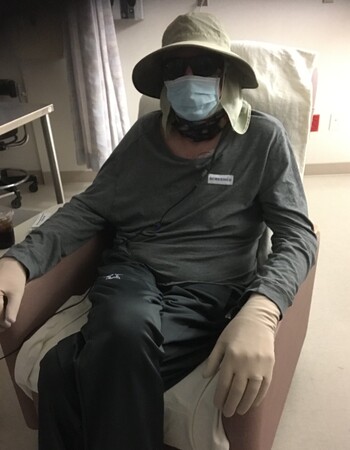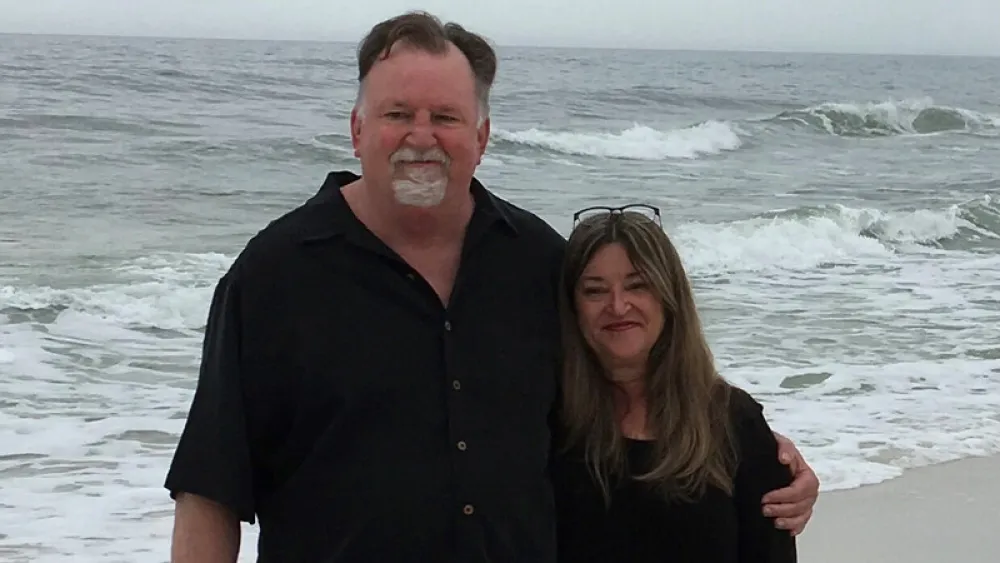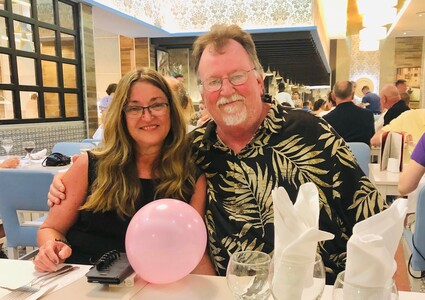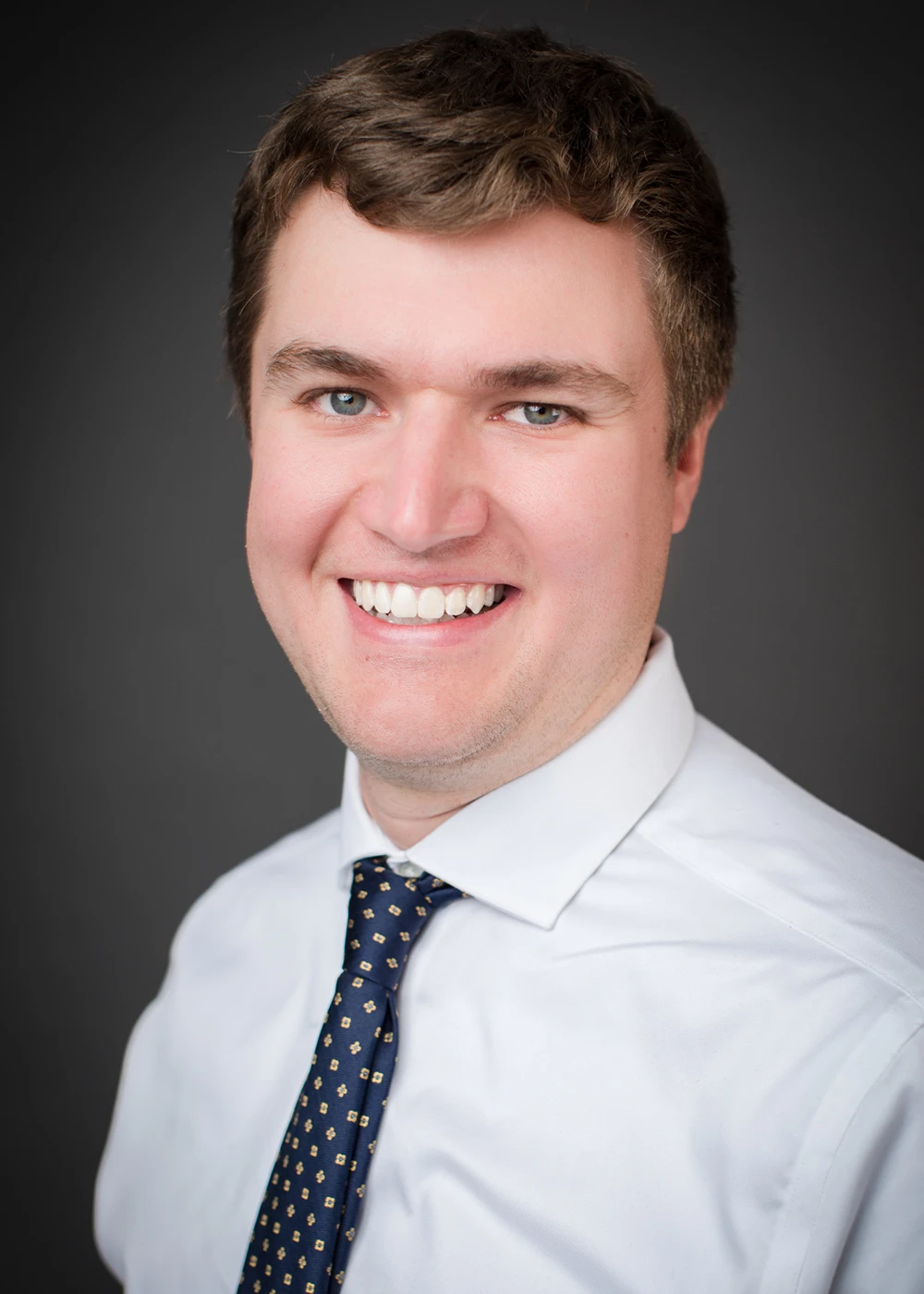





Cancer Care
Photodynamic therapy gives Council Bluffs man one final trip with friends
Published: Nov. 8, 2024

Kevin and Penny Richardson loved to travel.
Many years ago, the couple from Council Bluffs started going on cruises with friends from Des Moines. Eventually, they ran out of cruises to take, so they adventured to resorts in Mexico and the Caribbean. When the COVID pandemic altered their plans of leaving the country, they explored destinations in Florida.
In fall 2021, Kevin Richardson, who had been battling lung cancer for over a year, traveled to Pensacola without concerns of feeling out of breath after walking or needing oxygen – two things that he and his wife didn’t think would be possible.
“It was such a great trip,” Penny Richardson said.
Final option
After being diagnosed with stage 4 lung cancer in summer 2020, Kevin Richardson met Methodist pulmonologist Sumit Mukherjee, MD, and his team at Methodist Jennie Edmundson Hospital.
"We trusted him from the moment we met him, which isn't that easy for me to do,” Penny Richardson said.
Over the next few months, Kevin Richardson underwent multiple procedures because he continued to develop pneumonia. He also went through chemotherapy and radiation treatments but continued working as an accountant.
By late summer 2021, the cancer had continued to spread, limiting Kevin Richardson from doing many of the things he loved. He started coming to terms with the fact his life was going to end soon. He’d nearly run out of options before Dr. Mukherjee offered him photodynamic therapy (PDT) – a nonsurgical approach to killing cancer cells that involves a combination of high-intensity light and medication.
“Kevin wanted to do it, and I supported it 100% because Dr. Mukherjee was doing it,” Penny Richardson said.
Dr. Mukherjee learned about PDT from interventional pulmonary conferences he attended and was involved in some cases where he trained in Kansas City. But he had yet to complete a PDT case at Jennie Edmundson.
The process
PDT involves technology that has been around for some time, but it wasn’t until recently that the therapy was used to treat patients with endobronchial lesions – or tumors within airways of the lung.
The therapy is typically offered to lung cancer patients who have received other treatments and aren’t good candidates for surgery or wouldn’t benefit from it. PDT can be presented as a curative option or to improve quality of life.
The first step of PDT is to administer medication that makes a patient’s cells extremely sensitive to light. The patient is then given strict protocols to stay in dark rooms to protect themselves from any light – including overhead lighting and lamps – because they could develop a burn easily.

A few days later, the patient heads to the operating room to receive high-intensity light therapy directly pointed at the area where the cancer is present in an attempt to burn the cancerous cells. For patients with lung cancer, this is completed with a probe directed through a bronchoscope.
“It’s amazing to see how much the tumor just sloughs off from the high-intensity light,” Dr. Mukherjee said.
After the light therapy, the patient is admitted to the hospital and monitored to make sure they don’t experience sudden breathing complications.
“The medication concentrates on the tumor cells, and when you light them, that causes cell destruction,” said Methodist cardiothoracic surgeon Karin Trujillo, MD, who has performed PDT on three patients at Methodist. “The reaction not only kills the tumor by causing little explosions in the tumors, but it also invites the immune system to come and react to that area. It also causes thrombosis to the tumor. So it’s a three-pronged approach. It’s very powerful stuff.”
Following a day of monitoring, the patient is returned to the operating room for debulking – a process in which a probe is inserted into the airway to remove cells that were sloughed off.
Generally, two to three debulking treatments are completed to ensure that as much of the tumor as possible is taken out.
In Kevin Richardson’s case, he received the medication on a Friday, underwent the high-intensity light therapy the following Monday and returned for debulking on Wednesday and Friday that week.
Prior to the treatment, his right lung was completely collapsed. But after removing the cancerous cells with PDT, the lung completely expanded, and he was able to breathe with limited complications.
“It is amazing how well this medication works,” Dr. Trujillo said. “It’s really incredible. And it’s just really satisfying to go in there and debulk enormous tumors that are causing people problems – not only from an obstruction and pneumonia standpoint, but also to address potential life-threatening situations.”
Dr. Mukherjee has successfully completed PDT for one other patient since Kevin Richardson’s case in 2021.
‘Time you never expected’
Thanks to Dr. Mukherjee and his team, the Richardsons were able to take one last trip with their friends.
Kevin Richardson left Jennie Edmundson in mid-October and had two months of “bonus time” before he passed away in December.
“When you’re in a terminal illness and you get two or three more months, that’s time that you never expected or wouldn’t think that you’re going to get,” Penny Richardson said.

More Resources
- Learn more about cancer care at Methodist.


